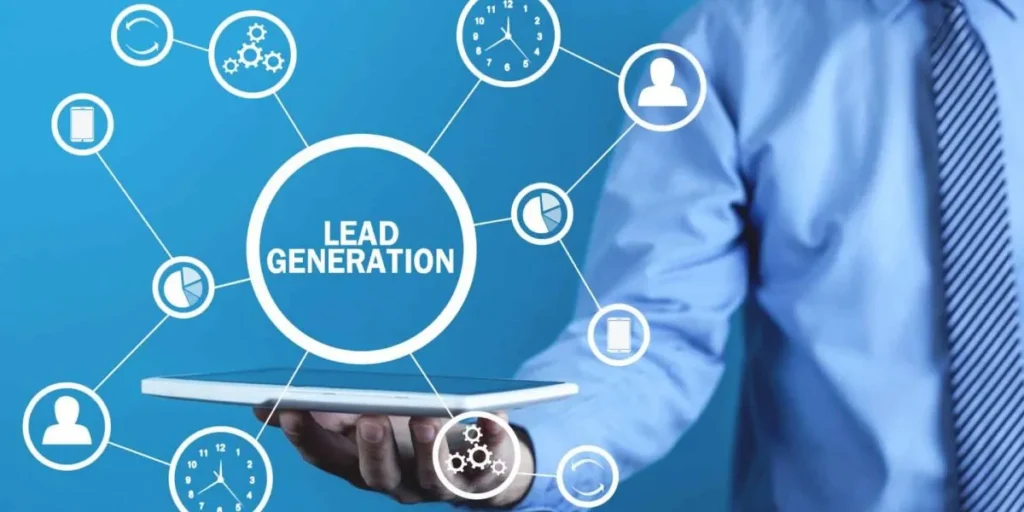In today’s fiercely competitive B2B marketplace, generating high-quality leads isn’t just important — it’s essential. Businesses that master lead generation not only grow faster but also build lasting customer relationships that fuel long-term success. But with so many strategies out there, how do you know which B2B lead generation examples actually deliver real results?
This comprehensive guide dives deep into 10 powerful B2B lead generation examples that work in 2025 — combining tried-and-true tactics with innovative, AI-driven approaches. Whether you’re a seasoned marketer or a business owner looking to build your sales pipeline, this article will equip you with actionable insights, backed by data and expert opinions, to transform your lead generation efforts.
What Is B2B Lead Generation?
Before exploring the best examples, it’s important to understand what B2B lead generation truly means.
B2B lead generation is the process of identifying and attracting potential business clients who have shown interest in your product or service. These leads then enter the sales funnel where they’re nurtured until they’re ready to make a purchase. Unlike B2C lead generation, B2B typically involves longer sales cycles, multiple decision-makers, and a need for highly personalized engagement.
Key Differences: Lead Generation vs Lead Nurturing
-
Lead Generation is about attracting and capturing interest.
-
Lead Nurturing involves building relationships and guiding leads through the buyer journey.
In B2B marketing, both are critical to success. For example, a manufacturing firm may generate leads through a trade show but will need nurturing campaigns to close deals over months.
Inbound vs Outbound Lead Generation
-
Inbound: Pulling prospects in through content marketing, SEO, webinars, etc.
-
Outbound: Actively reaching out via cold emails, calls, or paid ads.
Effective B2B lead generation strategies often blend both approaches.
Why Are B2B Lead Generation Examples Important?
You might wonder why studying B2B lead generation examples matters. Here’s why:
-
Avoid Costly Mistakes
By examining real-world examples, marketers can avoid ineffective strategies and focus on what works. -
Stay Ahead of Trends
B2B marketing is constantly evolving with new technologies and buyer behaviors. Examples help you adapt. -
Tailor Strategies to Your Industry
Different sectors respond to different tactics. Industry-specific examples provide relevant insights. -
Leverage Proven Tactics
Adopting strategies already validated by data and expert endorsement increases your chances of success.
Expert Insight: Brian Halligan, CEO of HubSpot, stresses the value of inbound marketing — citing that companies embracing this strategy generate 3x more leads than those relying solely on outbound outreach.
Top 5 Classic B2B Lead Generation Examples That Still Work
Even with advances in AI and automation, some classic lead generation examples remain foundational to B2B success. Here are five tactics proven to generate leads year after year.
1. Content Marketing: Blogs, Whitepapers, and Ebooks
Why it works:
Content marketing attracts and educates your target audience, building trust and establishing your brand as a thought leader. According to HubSpot, companies that blog generate 67% more leads per month than those that don’t.
Examples:
-
HubSpot’s in-depth guides and blogs drive massive organic traffic and leads.
-
A SaaS company creating an ebook on “How to Choose the Right CRM” can capture leads by gating the content behind a form.
Tips:
-
Use SEO-optimized keywords relevant to your audience’s pain points.
-
Promote content through email and social channels.
2. Email Marketing Campaigns
Why it works:
Despite the rise of social media, email remains a direct and cost-effective way to nurture leads. Campaign Monitor reports an average ROI of $36 for every $1 spent on email marketing.
Examples:
-
Personalized drip campaigns that nurture leads over weeks.
-
Salesforce uses segmented email lists to send tailored product updates and invitations to webinars.
Tips:
-
Craft compelling subject lines to boost open rates.
-
Segment your audience by buyer persona or stage in the sales funnel.
3. LinkedIn Outreach and Social Selling
Why it works:
LinkedIn is the leading social network for B2B marketers, with 80% of B2B leads sourced from the platform.
Examples:
-
Sales teams use LinkedIn Sales Navigator to identify decision-makers and engage with personalized messages.
-
Posting valuable industry content boosts profile views and connections.
Tips:
-
Combine direct messaging with content sharing for best results.
-
Participate in relevant LinkedIn groups.
4. Webinars and Virtual Events
Why it works:
Webinars offer an interactive platform for demonstrating expertise and engaging with prospects. ON24 reports that 73% of marketers say webinars generate high-quality leads.
Examples:
-
Zoom’s product demos and customer success webinars attract qualified leads ready to convert.
-
Industry panels with Q&A sessions increase attendee engagement.
Tips:
-
Promote your webinars across email and social media.
-
Follow up with attendees promptly with relevant offers.
5. SEO for B2B Lead Generation
Why it works:
Ranking high on search engines drives consistent, organic traffic — which converts better over time. Demand Gen Report highlights that 70% of B2B buyers start their research online.
Examples:
-
Optimizing website pages with keywords like “best B2B software solutions.”
-
Creating FAQ sections targeting featured snippet opportunities.
Tips:
-
Focus on long-tail keywords that reflect buyer intent.
-
Regularly update content to maintain rankings.
Innovative B2B Lead Generation Examples Using AI and Automation

Technology is reshaping B2B lead generation, offering new ways to identify, qualify, and engage prospects at scale.
AI-Powered Lead Scoring and Predictive Analytics
-
Tools like Salesforce Einstein analyze historical data to predict which leads are most likely to convert, enabling sales teams to prioritize outreach effectively.
-
According to Salesforce, AI-driven lead scoring can increase conversion rates by up to 30%.
Chatbots and Conversational Marketing
-
AI chatbots on websites engage visitors in real-time, answering questions and capturing lead information. Drift reports that chatbots can increase lead conversion rates by up to 20%.
Automated Email Nurturing and Follow-Ups
-
Platforms like Marketo and HubSpot automate personalized email sequences based on user behavior, ensuring timely and relevant communication.
Benefits:
-
Saves time and reduces manual errors.
-
Enables 24/7 engagement.
-
Improves lead qualification efficiency.
Industry-Specific B2B Lead Generation Examples
Different industries require tailored lead generation tactics to resonate with their specific buyer personas.
SaaS Companies: Free Trials and Product Demos
-
Offering free trials or demos lowers barriers to entry and allows prospects to experience value firsthand.
-
Case study: Slack’s freemium model drives massive lead generation by encouraging wide product adoption.
Manufacturing: Trade Shows and Targeted Email Campaigns
-
Although in-person events are returning, combining trade show leads with targeted follow-up emails maximizes ROI.
-
Example: GE leverages trade shows to showcase new products, then uses personalized emails to nurture interest.
Financial Services: Educational Webinars and Whitepapers
-
Financial services buyers value trust and education. Webinars addressing compliance, investment strategies, or risk management generate qualified leads.
-
Example: Deloitte regularly hosts webinars on financial regulations that attract decision-makers.
How to Measure the Success of Your B2B Lead Generation Efforts
Tracking key performance indicators (KPIs) is essential to understand what’s working and where to optimize.
Essential Metrics to Track
-
Conversion Rate: Percentage of leads turning into customers.
-
Cost per Lead (CPL): How much you spend to acquire each lead.
-
Lead Quality Score: Assessment of how likely a lead is to convert.
-
Sales Qualified Leads (SQLs): Leads deemed ready for sales outreach.
Tools for Measurement
-
Google Analytics: Tracks website traffic and conversion sources.
-
CRM Platforms (e.g., HubSpot, Salesforce): Manage and score leads.
-
Marketing Automation Software: Monitors campaign performance and lead nurturing.
Data Insight: Demand Gen Report reveals that companies actively measuring and optimizing their lead gen efforts see 50% higher revenue growth.
Actionable Tips to Replicate These B2B Lead Generation Examples
To put these insights into practice, follow these proven tips:
-
Personalize Your Outreach: Use data to tailor messaging based on industry, role, and buyer journey stage.
-
Adopt a Multi-Channel Approach: Combine content marketing, social media, email, and events for broader reach.
-
Leverage Technology: Implement AI tools and automation to increase efficiency and engagement.
-
Test and Optimize: Use A/B testing for emails, landing pages, and ad creatives to improve results.
-
Build Trust with Educational Content: Position your brand as a helpful partner, not just a seller.
Conclusion
Effective B2B lead generation requires a blend of timeless strategies and cutting-edge innovations. From content marketing and email campaigns to AI-driven automation and industry-specific tactics, the examples shared here provide a robust foundation for building a high-performing sales pipeline in 2025.
Start by evaluating your current efforts and selecting one or two new tactics to implement. Remember, consistency, personalization, and measurement are your best allies in turning prospects into loyal customers.
Ready to boost your B2B lead generation?
Audit your strategy today and implement these powerful examples to start driving more qualified leads tomorrow!
FAQ
Q1: What is the most effective B2B lead generation strategy?
A: It depends on your industry and audience, but inbound marketing combined with personalized outreach consistently delivers strong results.
Q2: How long does it take to see results from B2B lead generation?
A: Typically, it takes 3-6 months to see significant results, especially with content marketing and SEO.
Q3: What are cost-effective B2B lead generation examples?
A: Email marketing, LinkedIn outreach, and content marketing are highly cost-effective with strong ROI.
















